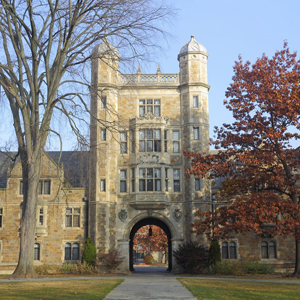 Affirmative action in the United States has been a central issue in higher education for decades and, a recent ruling by the Supreme Court marks the steady and continued development on the matter. It has been eight years since Abigail Fisher brought a suit in the Fifth Circuit (“Fisher I”) against the University of Texas at Austin regarding the school’s affirmative action admissions policy. Fisher alleged that the university had discriminated against her on the basis of race, thus violating the Equal Protection Clause of the U.S. Constitution. The University of Texas at Austin grants admission to Texas high school seniors who graduate in the top 10% of their graduating class, regardless of their race. Students like Fisher, who fail to graduate at the top 10% of their class, can still gain admission through the school’s holistic review admission process. Fisher brought suit after being denied admission. In Fisher I, the Court in a 7-1 decision sent the case back to the United States Court of Appeals for the Fifth Circuit, holding that the court of appeals had failed to apply strict scrutiny in its decision. The court of appeals had instead improperly presumed that the school had acted in good faith and gave the petitioner the burden of rebutting that presumption. On remand, the Fifth Circuit upheld the university’s policy and Fisher yet again sought a petition for certiorari to the Supreme Court (Fisher II).
Affirmative action in the United States has been a central issue in higher education for decades and, a recent ruling by the Supreme Court marks the steady and continued development on the matter. It has been eight years since Abigail Fisher brought a suit in the Fifth Circuit (“Fisher I”) against the University of Texas at Austin regarding the school’s affirmative action admissions policy. Fisher alleged that the university had discriminated against her on the basis of race, thus violating the Equal Protection Clause of the U.S. Constitution. The University of Texas at Austin grants admission to Texas high school seniors who graduate in the top 10% of their graduating class, regardless of their race. Students like Fisher, who fail to graduate at the top 10% of their class, can still gain admission through the school’s holistic review admission process. Fisher brought suit after being denied admission. In Fisher I, the Court in a 7-1 decision sent the case back to the United States Court of Appeals for the Fifth Circuit, holding that the court of appeals had failed to apply strict scrutiny in its decision. The court of appeals had instead improperly presumed that the school had acted in good faith and gave the petitioner the burden of rebutting that presumption. On remand, the Fifth Circuit upheld the university’s policy and Fisher yet again sought a petition for certiorari to the Supreme Court (Fisher II).
On June 23, 2016 Justice Kennedy writing for the majority, upheld Grutter v. Bollinger, the case where the Court held that the University of Michigan Law School’s use of race in admissions was constitutionally permissible, as good law and rejected Fisher’s argument that affirmative action is per se unconstitutional. In Fisher II, for the first time in almost three decades on the Court, Justice Kennedy ruled in favor of a race-based policy, stating that “[c]onsiderable deference is owed to a university in defining those intangible characteristics, like a diverse student body, that are central to its identity and educational mission.” Kennedy’s opinion embraces the precedent set in United States v. Lopez, finding that public universities should continue to serve as “laboratories for experimentation,” giving schools the opportunity to work with admission policies that they find will best cultivate diverse learning environments.
In Grutter, Justice O’Connor stated that she hoped that in 25 years, the use of racial preferences would no longer be necessary to further the interest approved. Justice Kennedy’s opinion indicates that he acknowledges a benefit in race-conscious policies while also noting that universities are “oblig[ed] to engage in constant deliberation and continued reflection regarding [their] admission policies.” While Justice Kennedy does not suggest a sunset period the way Justice O’Connor did in Grutter, Justice Kennedy takes the position that race-conscious policies should be eliminated, should their purpose be undermined.
While the Court’s decision may have been celebrated by many advocates of affirmative action, Justice Alito offered a dissent more than double the length of the majority opinion. Justice Alito found University of Texas at Austin’s arguments flimsy, and the deference given to them by the majority foreclosed by Fisher I. More interestingly, Alito attacked the truthfulness behind the university’s admissions program, doubting that it was actually meant to help disadvantaged students. To the contrary, Alito noted that this was a victory for wealthy students of color who did not work as hard as their counter-parts from impoverished or disadvantaged communities, going so far as to call it “affirmative action gone wild.” Justice Alito’s dissent is a reminder that in attempting to reach equality in higher education, there is no easy answer, especially when race is a factor.
While Abigail Fisher’s story has come to a close, this is just the beginning of a movement changing university policies regarding affirmative action. Currently pending in the United States District Court for the District of Massachusetts is a challenge against the admission policy of Harvard University, where Asian-American applicants allege that they were denied admission due to quotas put in place by the Ivy League school. Additionally, Asian-American organizations around the country are calling upon the Department of Education to investigate supposed discriminatory policies that place quotas on Asian-American applicants at several prominent universities, including Yale University, Brown University, and Dartmouth College.
While we’ve hit the half-way point of Justice O’Connor’s 25-year sunset period in Grutter, it seems that the disputes revolving around affirmative action have only just begun. While a solution remains unclear, the empirical data gathered over the next few years may provide answers.
